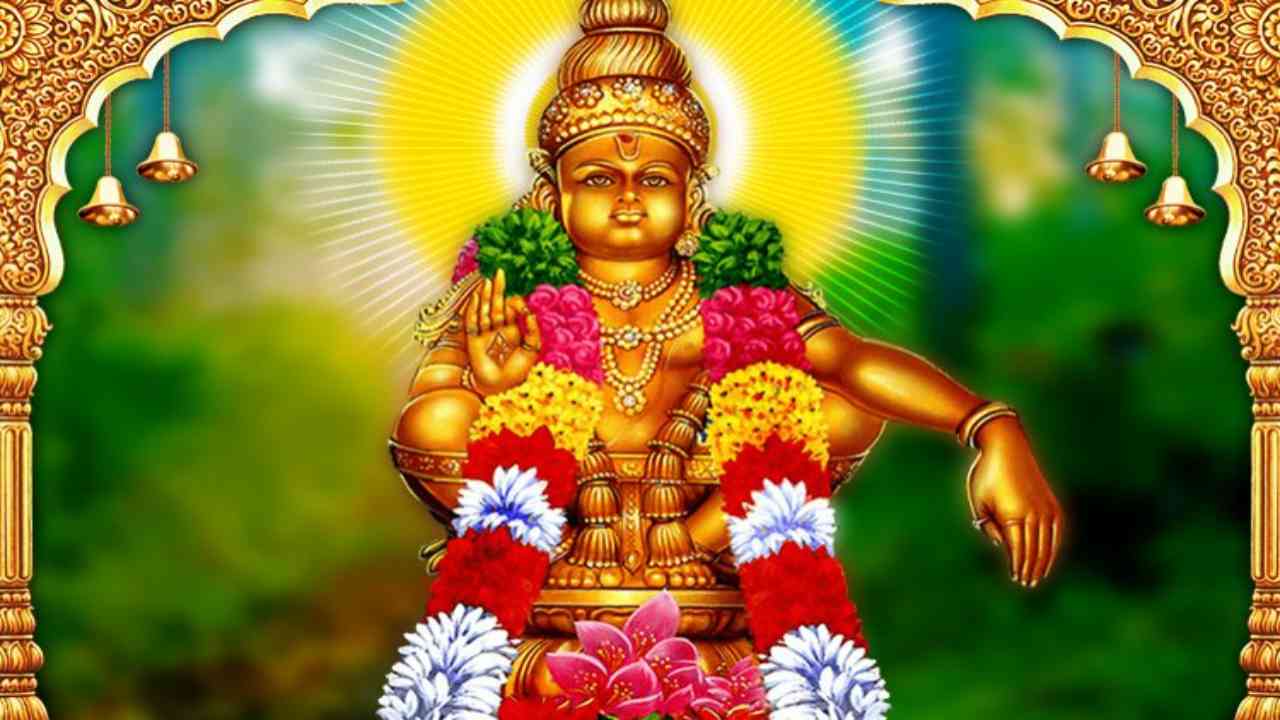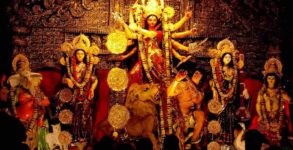Mandala Puja is an important ritual observed at the Sabarimala Ayyappa Temple in Kerala. The day of Mandala Puja marks the end of the 41 days long austerity known as Mandala Kalam that is observed by the followers or devotees of Lord Ayyappa.
The 41 day fast begins on the first day of the Malayalam month of Vrishchikam .
Mandala Puja along with ‘Makara Vilakku’ are the two major events held at the Sabarimala Ayyappa Temple that draws devotees from all over Kerala and neighboring states.
During this time the temple remains open on most of the days for the devotees.
As a tradition, devotees visiting the Sabarimala Ayyappa Temple during the Mandala Puja also visit the ‘Guruvayur Temple’.
During this time special ‘Abhishekam’ ceremony is organized in the ‘Guruvayur Temple’.
Rituals during Mandala Puja:
Vratam or fasting is an integral part of Mandala Puja that is observed with full dedication and strictness by the traditional and orthodox people of South India.
Living in austerity is also mandatory for people who visit the pilgrimage at Sabarimala shrine. During the period of Mandala Puja, devotees lead a pious and simple life.
Devotees wear Rudraksha or Tulsi mala with Lord Ayyappa’s locket till the time they make a visit to the Sabarimala Ayyappa Temple and then they take out the Mala. T
he devotees during this time are referred as ‘Swami’ or ‘Ayyappan’.
During the period of Mandala Puja, devotees need to keep their body as well as mind clean and they must completely shun the worldly pleasures.
Refraining from alcohol and smoke is mandatory for all the devotees visiting the Sabarimala shrine during the Mandala Puja. It is important to pray twice daily. During this period they must avoid sex and try not to hurt other’s feelings.
The most auspicious day during the Mandala Pooja is the Makar Sankranti Day. Mandala Pooja is also called Makaravilakku. This is held every year between 14-16th of January. The procession begins by taking the Lord’s jewels to the Old Pandalam Palace situated in Sabarimala.
Amidst this, you will notice the Krishnaparuntu (the Brahminy Kite), which is believed to be the vehicle of Lord Vishnu; hovering high above until the jewels reach the palace. Then it circles about 9 times above Sannidhanam in Sabarimala as a sign of respect to Lord Ayappan.
The only star that is visible to us will be the Makara Jyoti as it marks the speciality of the ritual. During this time, Lord Ayappan Idol is adorned with jewels and devotees chant “Swamiye Saranam Ayyappa”.
Once the Lord is clad in jewels, the star vanished mysteriously. Last, a bright effulgence or Makaravilakku shines 3 times from the hills opposite to Sabarimala and that ends the blessed ritual.
Important Timings On Mandala Puja:
Sunrise: December 26, 2021 7:10 AM
Sunset: December 26, 2021 5:44 PM
Venue: Lord Ayyappa Temple, Sabarimala
Location: Sabari Hills in the Western Ghats
District: Pathanamthitta, Kerala
Significance of Mandala Puja:
The significance of Mandala Puja is stated in several Puranas. It is mentioned in these religious scriptures that a person’s destiny can be positively changed only by performing Mandala Puja.
This puja can be performed by any individual solely but it can only be done once during his/her lifetime. Mandala Puja is a very powerful puja that grants fulfillment of all the desires if done with full devotion and dedication.
It has been witnessed that a person gets what he/she wants after completing the Mandala Puja. The celebrations of Mandala Puja connotes the 41 days of austerities. The strictness of the vratham during Mandala Puja helps to cleanse the soul.
The austerity can be observed by all, both men and women alike. Females aged between 1-9 years and those above 50 are also allowed to do the Mandala Pooja vratham and they are known as ‘Malikapuram’.


















